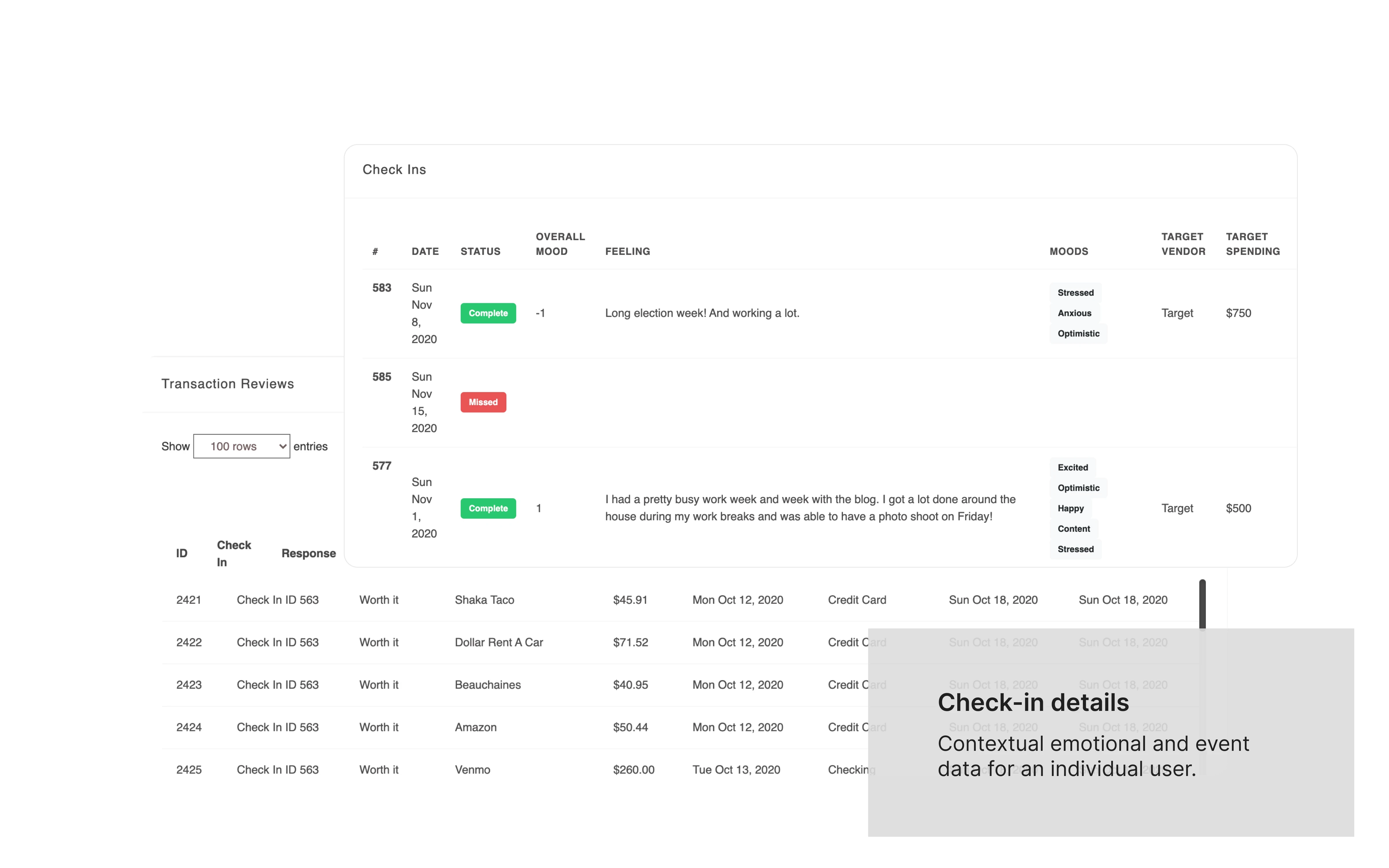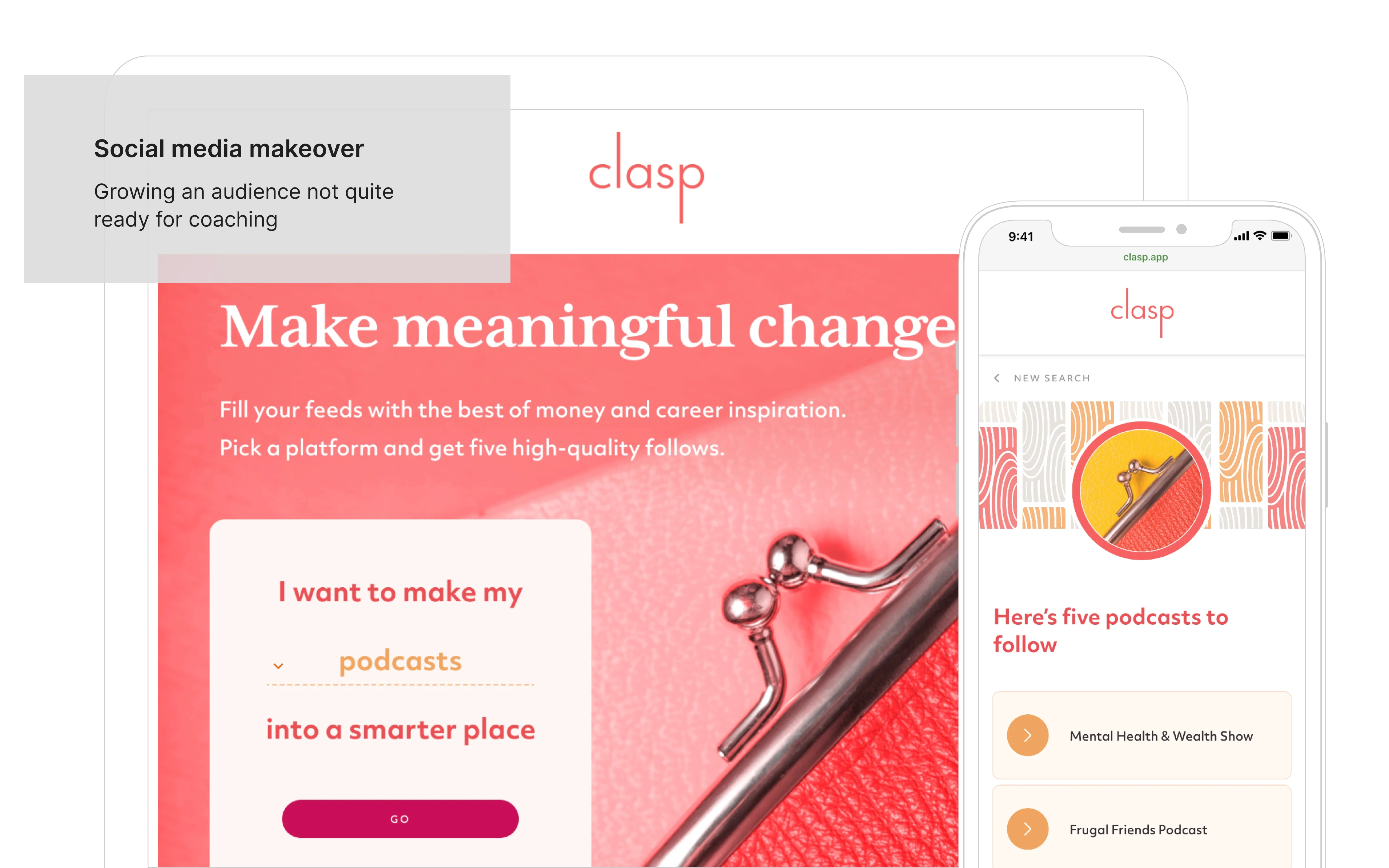Entrepreneurship
Applying the power of human connection to personal finance.
Pivoting an early-stage personal finance product from a solo-use app to a MVP coaching platform.
Overview
Problem
Finding market/product fit and channel/market fit in order to get to seed funding.
Clasp had launched in the Apple Store as a free personal finance app, focused on improving financial habits through mini-challenges and self-reflection. Despite running paid ad campaigns, adoption and engagement was low.
“It takes $50M to build a consumer brand from scratch,” a founding partner told us in our first investor advisory meeting.
We had to consider customer acquisition beyond paid social media ads, and refine the product to increase traction.Clasp started as a solo-use personal finance app, blending mini-challenges with self-reflection exercises. Despite its innovative concept, adoption and engagement was low, and qualitative research told us that there wasn’t enough there for users to stay.
Solution
Clasp was reimagined as a comprehensive platform to connect personal financial coaches and their audiences.
A freemium iOS app, with a potential upsell into a coaching product.
A coaching product, tested as a proof of concept: individual or group coaching through the Clasp iOS, track progress and engage users via SMS messaging.
Our vision also included creating a financial coach marketplace as part of user acquisition.
Impact
Our MVP showcased considerable promise and viability, based on positive responses to the proof of concept, and subsequent discussions with potential investors.
We continued development of the freemium app and marketing efforts.
Right after we released the updated app, my co-founder had to step back due to personal circumstances. We mutually agreed to pause further development. While this wasn’t the outcome we hoped for, the experience was profoundly educational from all angles.
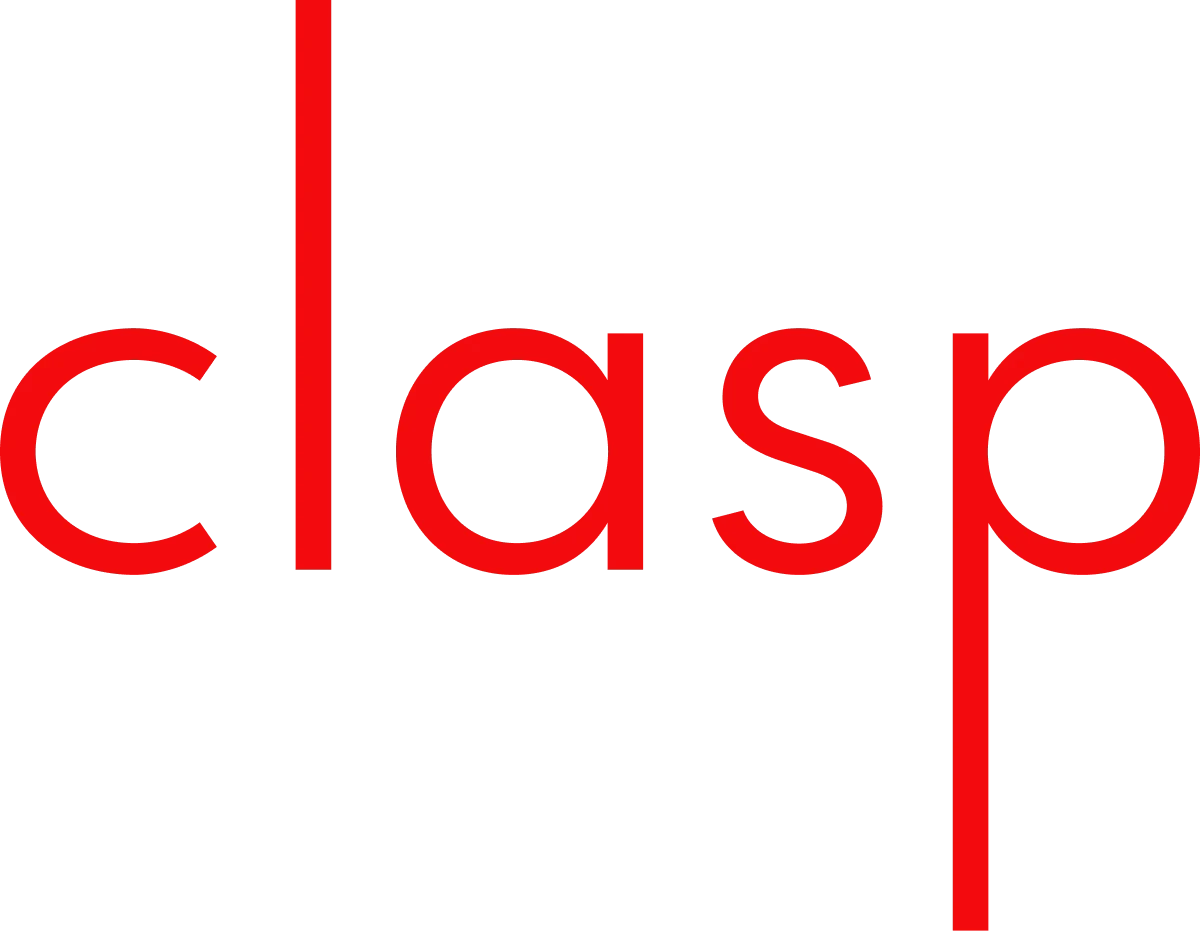
Clasp's mission was to make personal finance manageable and relatable for young working women, a group often left out of the conversation.
Originally a passion project, Clasp was co-founded by me and a software engineer with a Chartered Financial Analyst background.
Role & Responsibilities
As Design Co-founder, I led and executed in all aspects of the product:
Conducting user research and driving product strategy
Developing the UX/UI and design system
Managing prototyping and proof of concept testing
Defining branding and creative direction
Clasp Team
Tech Co-founder
Design Co-founder (me)
Part-time contractors:
iOS Engineer
Motion Design Specialist
Social Media Manager/Financial Coach
Timeline
9 months
Approach
Return to research
Based on VC advisor feedback, we explored potential partnerships to gain traction, rather than building a brand and credibility from scratch.
At this time, financial coaches were gaining popularity and building communities on TikTok and other platforms. Their growing influence and reach to our target audience prompted us to reach out and continue research.
Note: Unlike advisors, coaches are non-fiduciary, and don’t provide advisory services or handle money. Instead, coaches provide education and guidance on personal finance basics.
Coach insights
Interviews with several full-time coaches and part-time educators revealed crucial insights:
Visibility into results
Coaches often used webinars, PDFs, and spreadsheets to reach a larger audience. However, these tools fell short in communicating outcomes back to the coach. Additionally, coaches lacked time, skills, and resources to build a product to meet this need.
Balancing personalization with scale
One-on-one coaching was more personalized yet time-consuming and costly for both parties.
“[One-on-one coaching] is the most gratifying […] to have someone in real time tell me where they're blocked and help them through it. With my digital products or webinars, they'll be inspired, but I don't see the followthrough or results.”
- Full-time coach and CEO
This highlighted a gap in the market: there was no dedicated tool for financial coaches to continuously engage with their audience, track progress, or see their community's financial health collectively.
End user insights
Interviews with eight women in a finance coaching Slack community aimed to understand their motivations, habits, and identify gaps in their learning experience.
Validation of mindful spending
Our discussions confirmed that mindful spending is a critical strategy for users, who employed everything from handwritten journals to spreadsheets for managing finances.
"[My money journal] makes me actually stop and think about what I'm spending and remember that I absolutely do have a choice."
- Finance Community Member
Community impact
The sense of belonging and mutual support within these communities was profound. The connection fostered between financial coaches and their communities underscored the significant role of shared experiences and goals.
A coaching platform
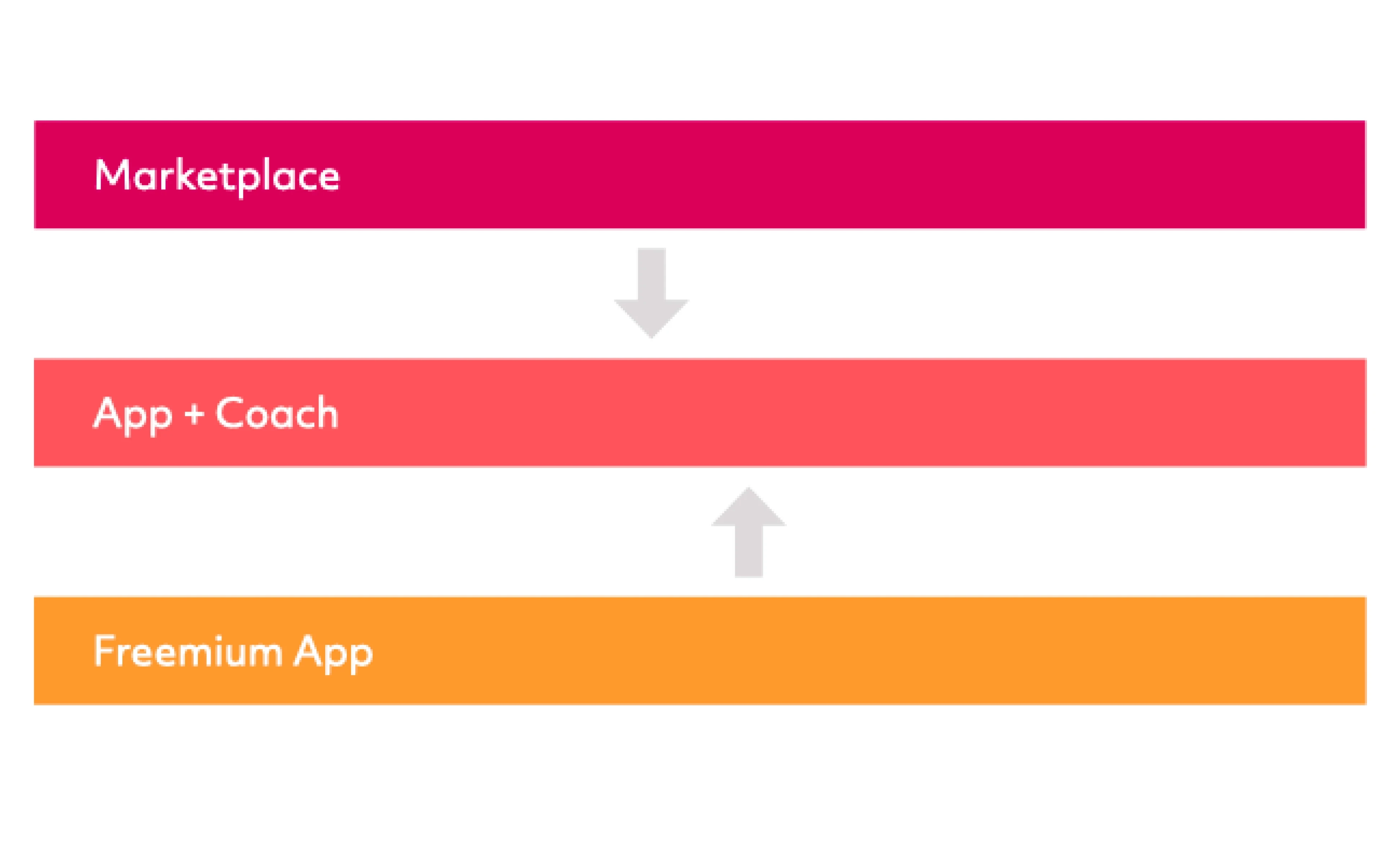
The proposed Clasp ecosystem.
We decided to pivot Clasp into a financial coaching platform with the following components:
Clasp Money Journal
The end user iOS app would remain free. Most of the features in the production app could be refined and repositioned to support our new direction.Coaching Experience
Access to coaching (messaging, advice) within the app would be an upsell.Marketplace
If the coaching proof of concept was successful, we would pilot a directory/marketplace outside of the app, for users to connect with a coach.
Money Journal
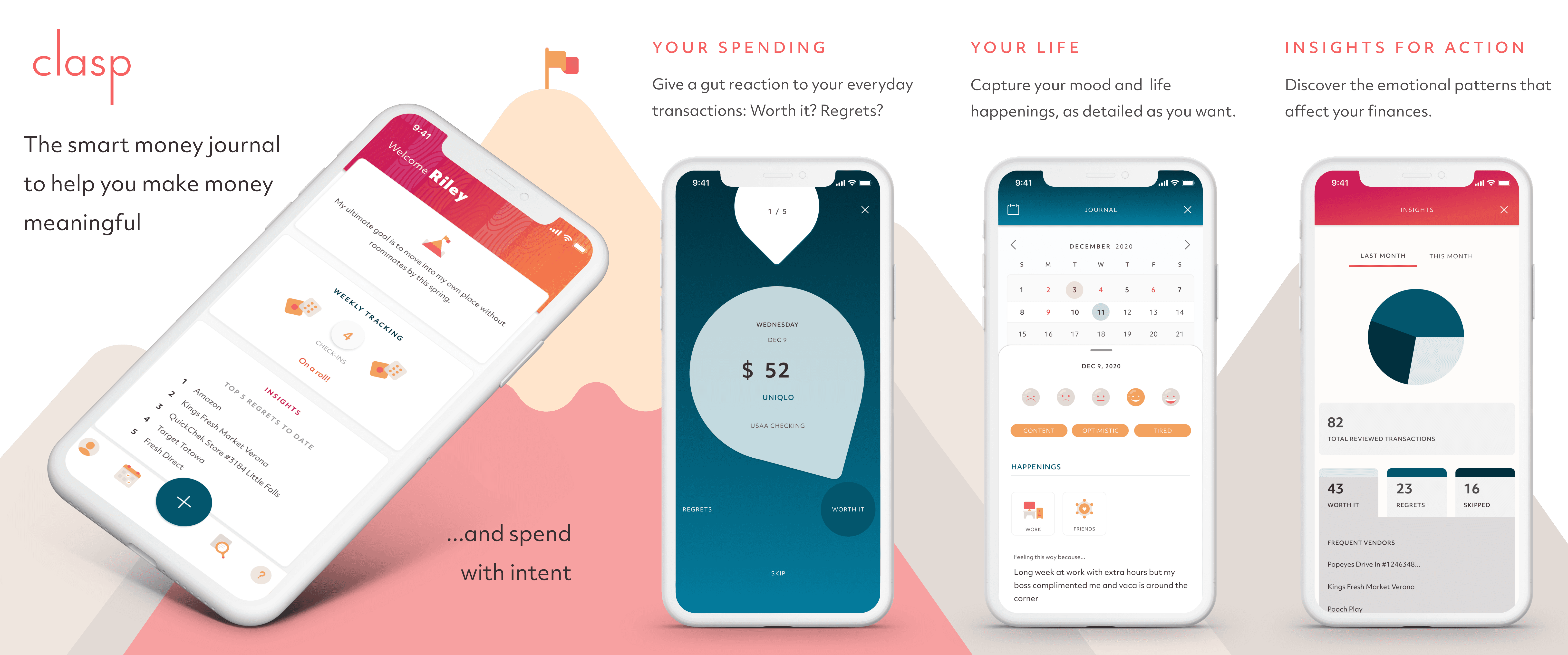
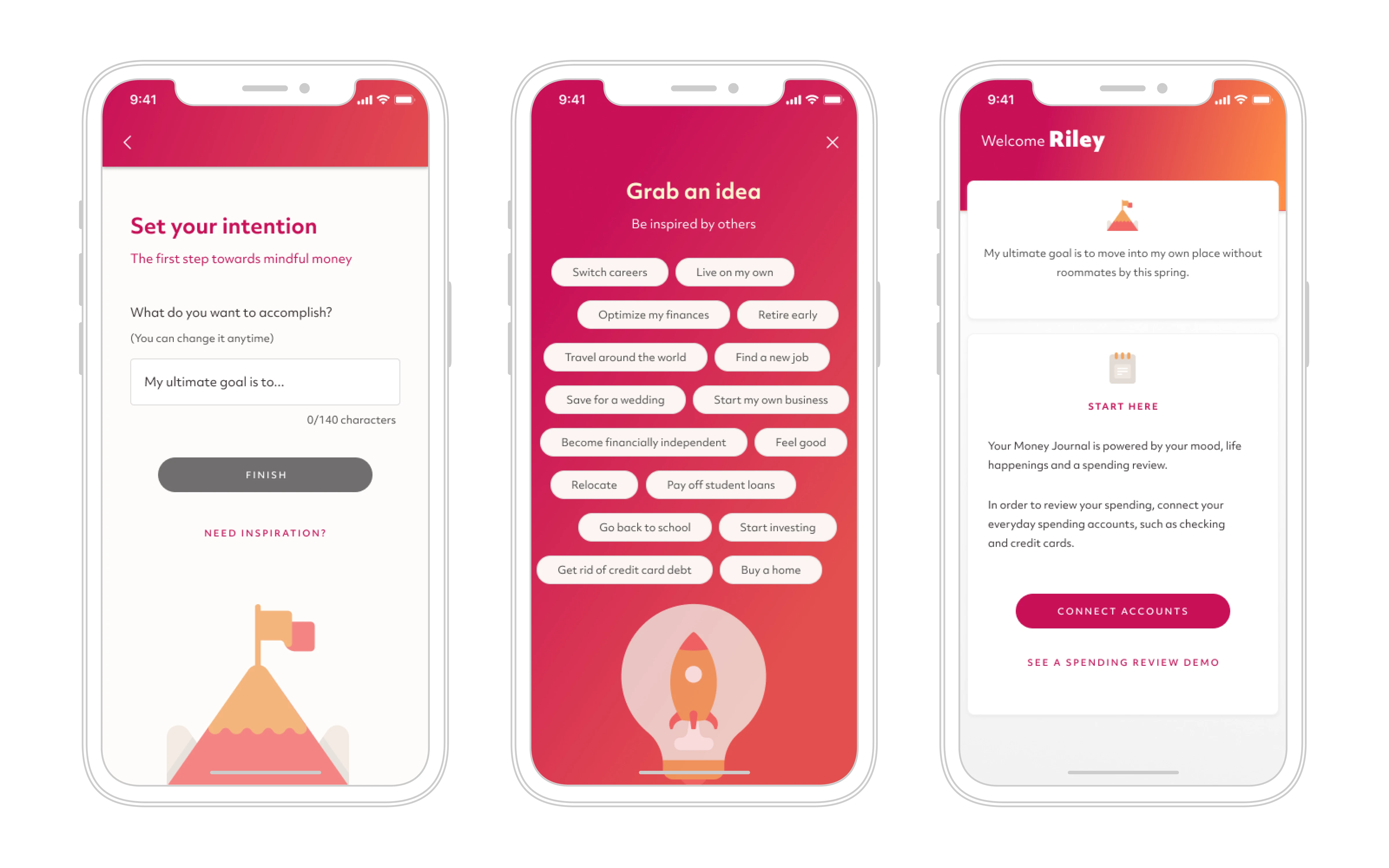
Purposeful onboarding
During onboarding, users set their intention, linked their accounts, and completed a first-check in.
Three-step check-in
Check-ins started with mood and daily event logging, with optional emotional tags and detailed text entries. In the spending review, users gave a gut reaction to recent transactions as worthwhile, regrettable, or uncertain. Transactions were grouped in sets of five to minimize cognitive overload.
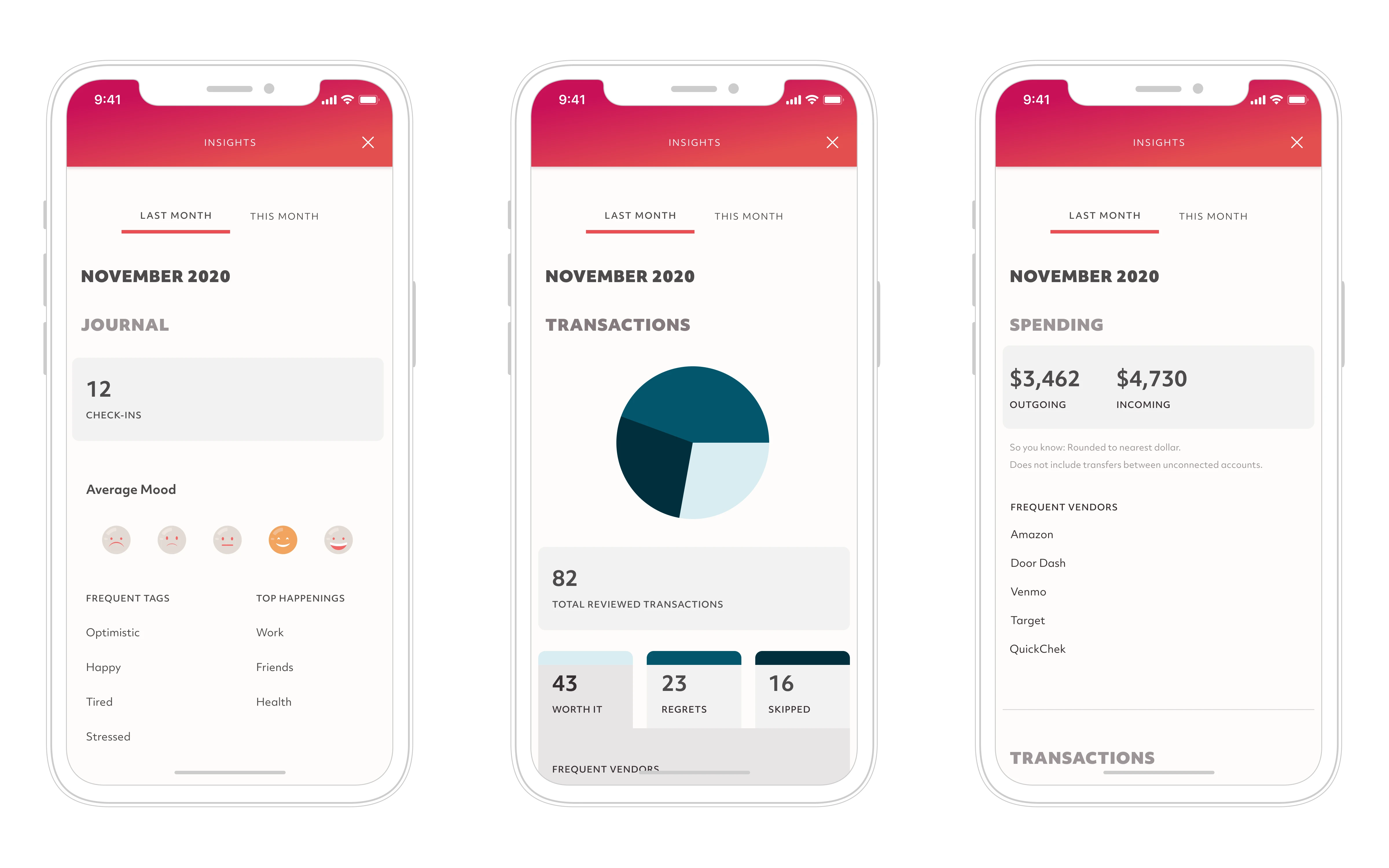
Insights
For a first pass, we kept insights simple, aggregating the most frequent responses. Eventually, we would add depth with data patterns.
Coaching
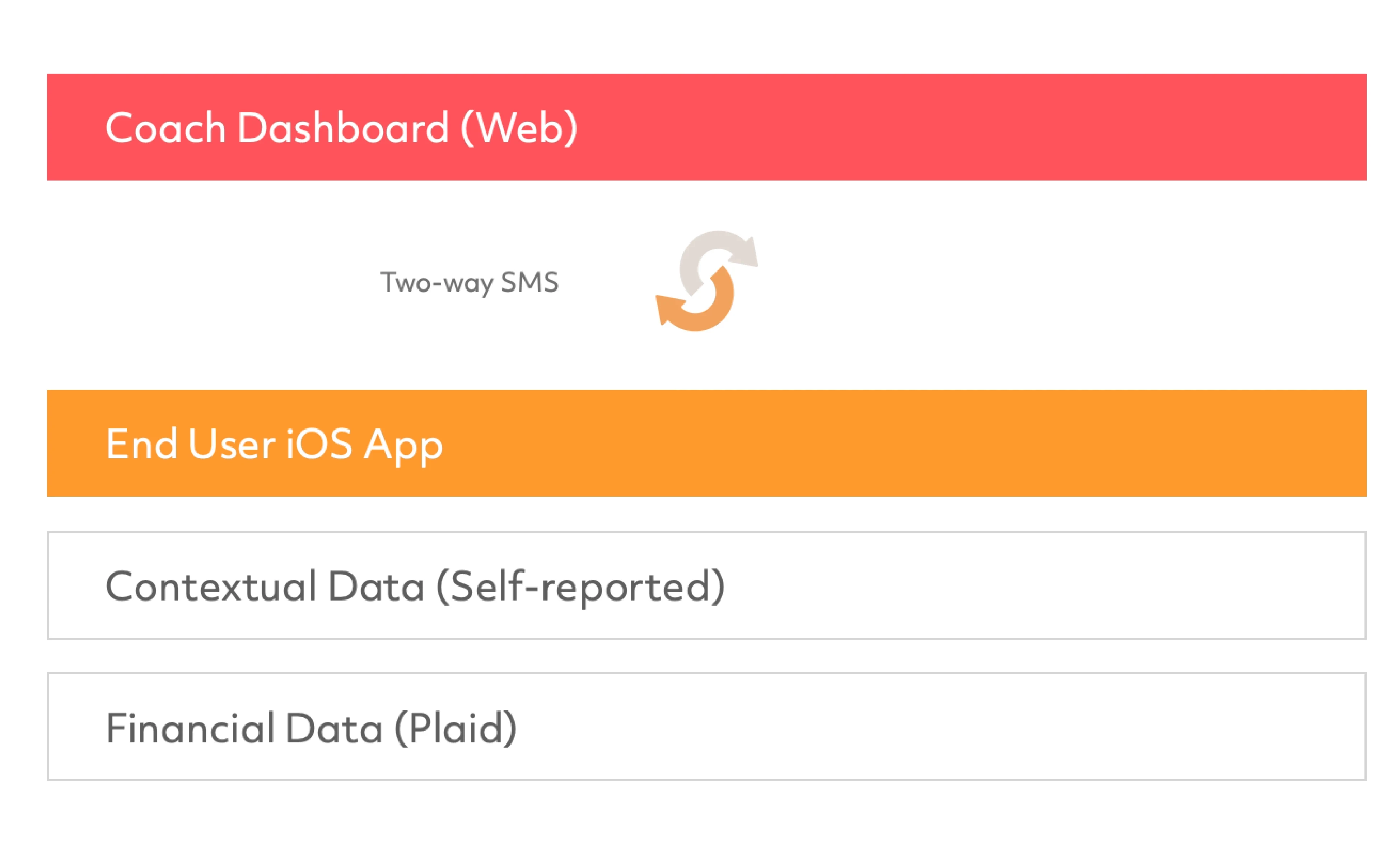
Proof of concept for coaching via app.
We split development into two tracks:
Clasp Money Journal - freemium, without coaching
A coaching experience on TestFlight to evaluate functionality and user interest.
We didn’t want the Money Journal to hold up the proof of concept, so added key screens within the “old” app. Not the prettiest nor the cleanest, but enabled us to move forward.
Additionally, our primary coach was set to go on maternity leave and we didn't have time to cultivate a new relationship with another influencer. Aitza, our social media manager, had a background in finance counseling and stepped in as a interim coach. She leveraged her network to form a test group of eight, familiar with her, for a focused three-to-four-week trial.
User Feedback
End user feedback was largely positive, in fact some users wanted more interactive sessions. The personalized SMS was a hugely popular. Occasional issues were noted, like inaccuracies in tracking recurring expenses.
On the coach side, setting expectations for availability was noted, in addition to the need for vetting across all coaches to ensure quality.
Fun fact: in the process of networking, a major influencer ended up copying our money journal (without the coaching experience).
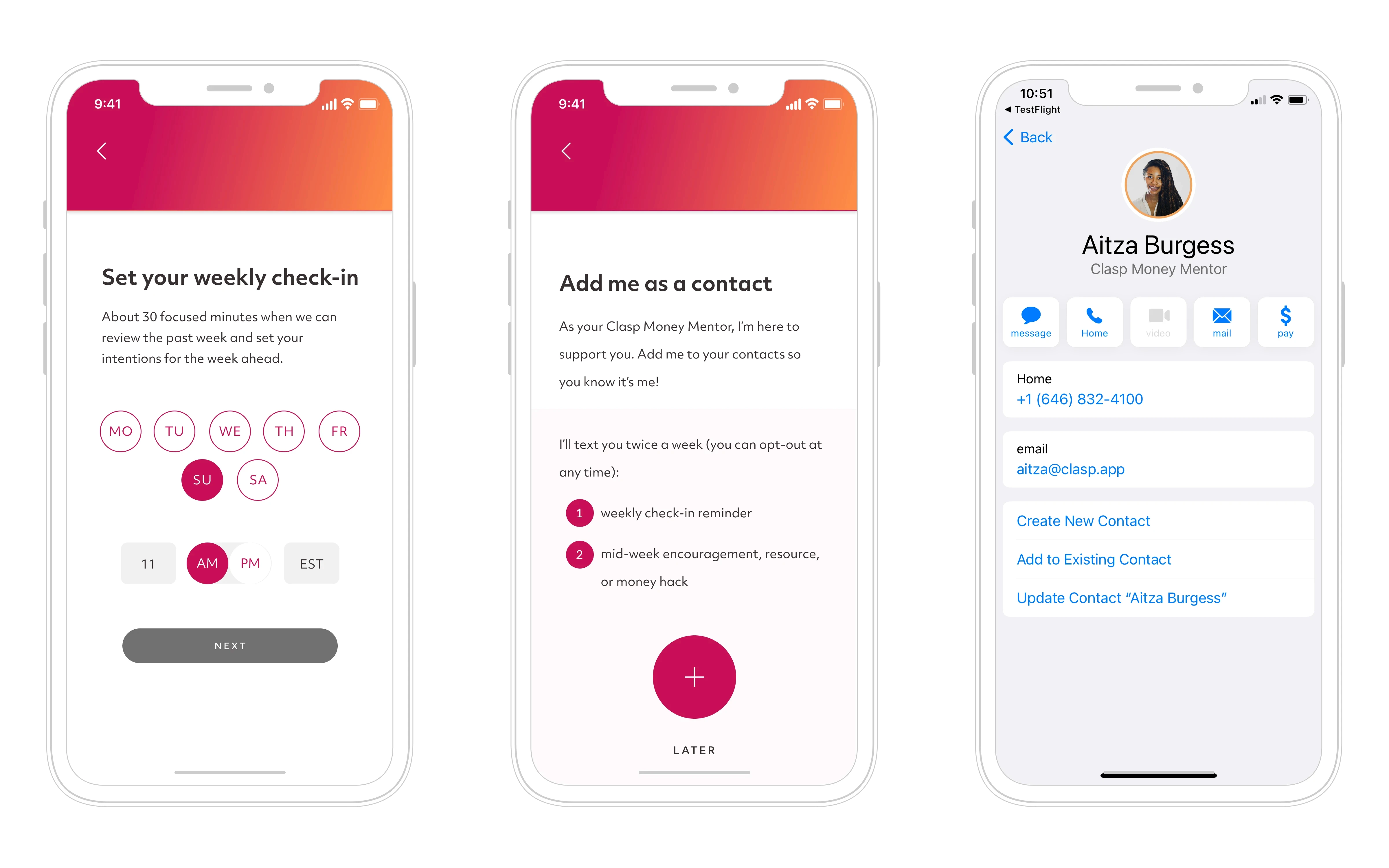
Onboarding
We introduced two new screens: one for scheduling weekly check-ins and another for adding Aitza as a contact, so SMS messages would feel more personal.
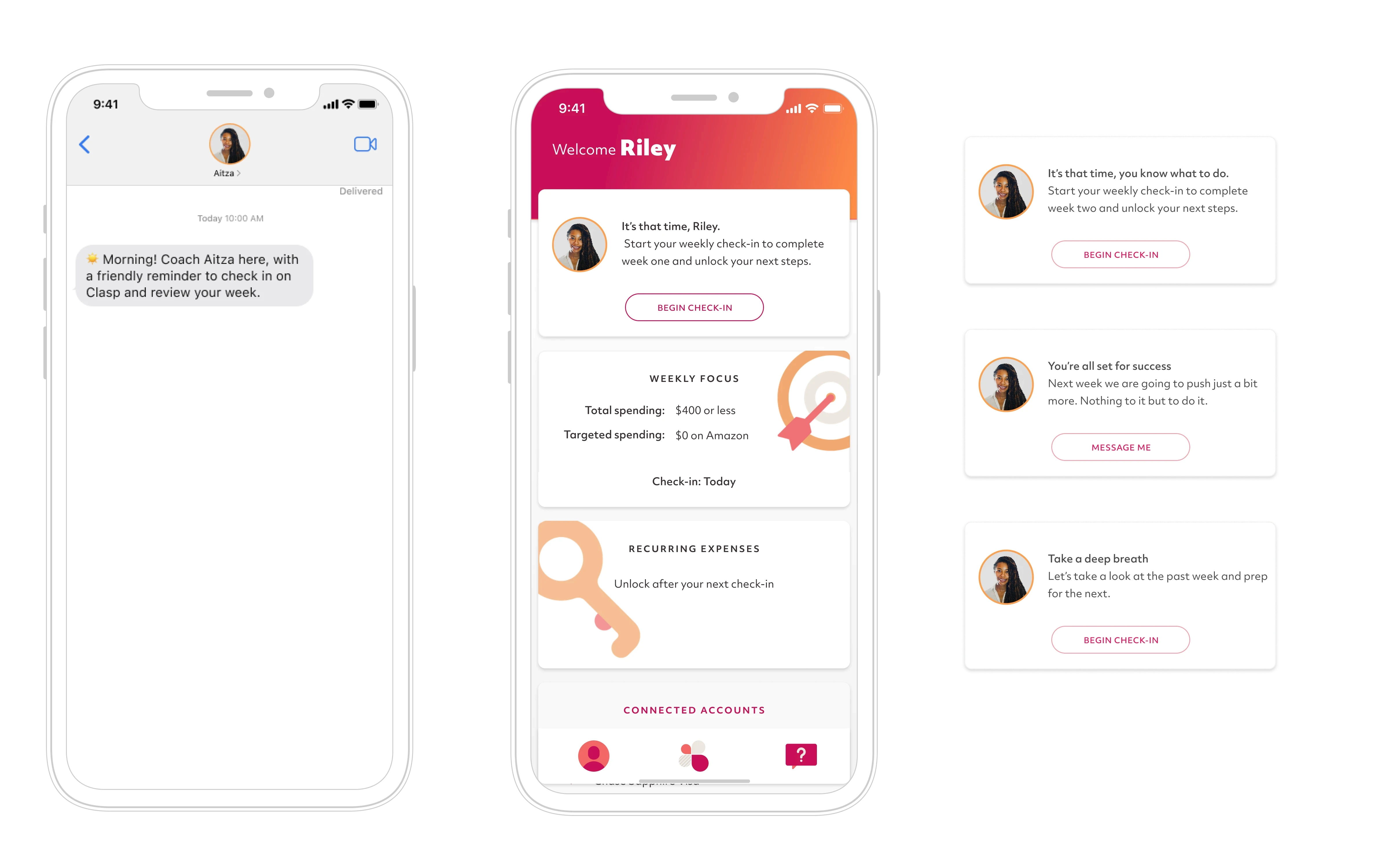
Weekly check-in/SMS
We integrated Twilio for SMS capabilities. Aitza sent weekly SMS reminders to check-in, review transactions, and set weekly spending goals. The coach card on the home screen changed weekly, depending on user activities (options to the right.)
Coach dashboard
Aitza had a streamlined view into user financial behaviors and journal reflections in addition to composing, scheduling, and sending SMS.
Supporting efforts
While developing the Clasp Money Journal, we began several parallel initiatives to broaden our impact:
The Money Gay on TikTok
Created an influencer (my co-founder) to expand our community and engage our target audience.
Money Mindset Blueprint Course
Introduced a course on Teachable to complement the app, focusing on financial wellness.
Social Media Makeover (unlaunched)
Promoted a campaign for a healthier financial perspective on social feeds, aiming to attract a wider audience.
Coach Marketplace (unlaunched)
Began building a space for users to discover financial coaches, extending our ecosystem for financial empowerment.
These initiatives were designed not just to complement the app, but to create a comprehensive ecosystem where users could engage, learn, and grow.
Navigating the unexpected
Just as we launched—our app, the Teachable course, and the full suite of resources —my co-founder bowed out for personal reasons. This wasn’t how we envisioned things ending, but it's a reality many startups face.
This experience, though abrupt, taught us plenty about the startup journey: resilience, the need for clear backup plans, and the importance of understanding between partners. Every startup story has its ups and downs, and it's all part of a bigger learning curve.
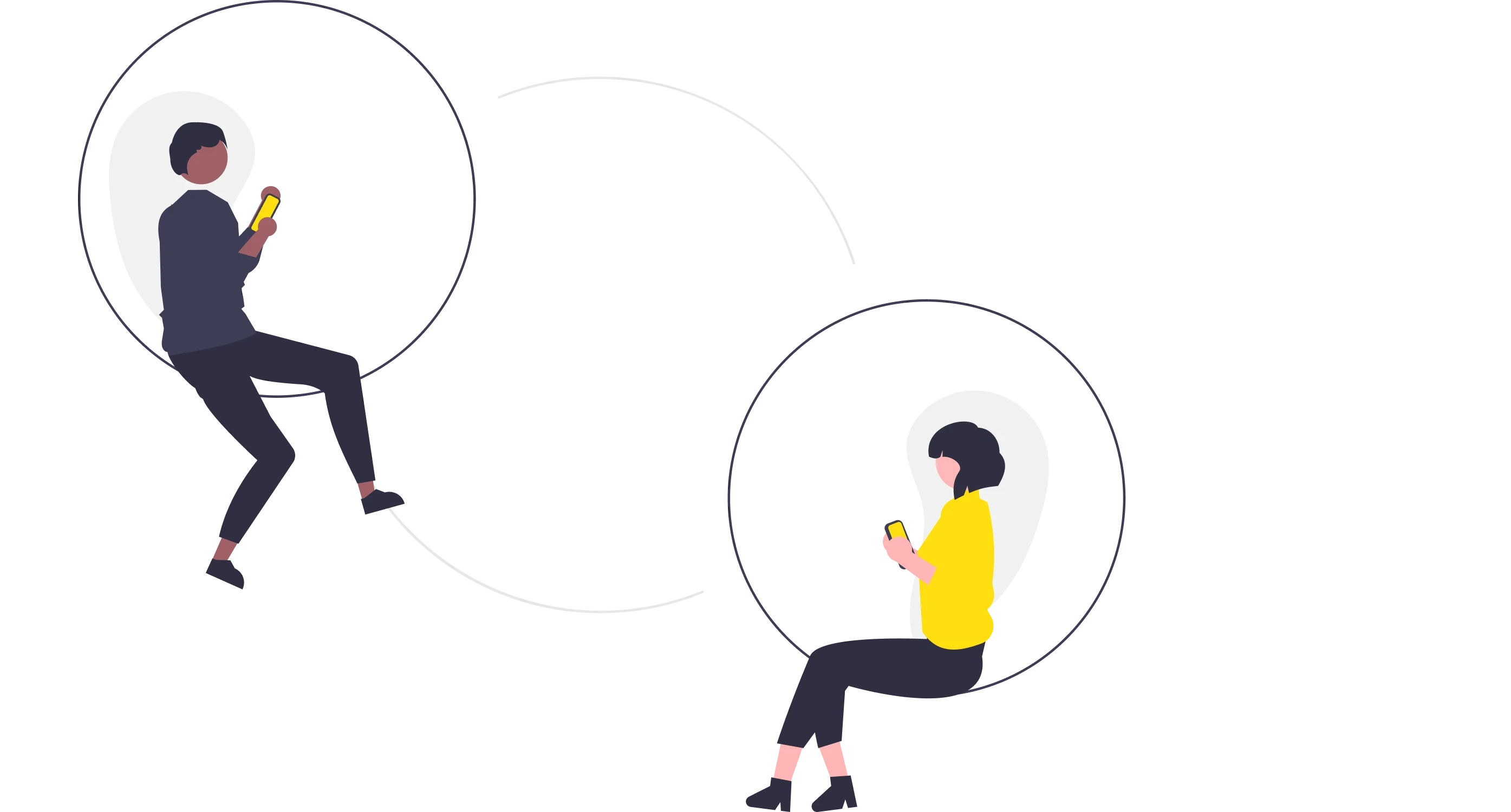
Key learnings
Business
Design the business first
We would have been better served by establishing a clear monetization strategy early on. Getting users on board and engaged is fantastic, but the real puzzle was figuring out revenue, especially with coaches. The lesson learned is clear: understand how your startup will generate revenue before scaling the user base.
Product
Start with community: have a plan
Leveraging influencers and their communities proved crucial for gaining traction. However, building these relationships was time-consuming and felt like a bit of a dance.
When we suddenly attracted an audience with The Money Gay on TikTok, we needed a more defined approach for leveraging this momentum. Success lies not just in capturing interest but in sustaining and deepening engagement.
Business
Focus on smart growth over scale
The allure of scaling can be tempting for any startup, but our journey taught us the value of focusing on smart, incremental growth. Many of our solutions were more complex than necessary. The key takeaway is to aim for progress towards the next immediate goal, rather than overreaching towards a distant future.






